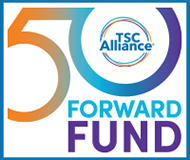In a new study using the TSC Alliance’s Natural History Database, researchers observed that different clinical diagnoses of tuberous sclerosis complex (TSC) may commonly co-occur, or cluster, in varying groups of people with TSC. This discovery enhances the understanding of TSC by identifying distinct clusters of symptoms that may help in predicting disease progression and tailoring treatment. “Without the TSC Alliance team’s incredible effort to establish and maintain the Natural History Database, this work would not have been possible,” says the study’s senior author, Ajay Gupta, MD, Section Head of Pediatric Epilepsy at Cleveland Clinic.
While the study has some limitations, it opens the door for further research into the complex relationship between genetics and clinical presentation in TSC, ultimately aiming to improve patient care and outcomes.
Study Overview: Using data from the TSC Alliance’s Natural History Database, which includes information on 2,350 patients collected between 2006 and 2022, the study focused on 947 individuals with complete symptom profiles. Researchers analyzed 29 clinical features using advanced statistical methods to group patients into clusters based on co-occurring symptoms. Four distinct subgroups were identified:
- Cluster 1: Angiomyolipoma-Predominant TSC – This group had a high prevalence of kidney tumors (angiomyolipomas), brain tumors (subependymal giant cell astrocytomas or SEGAs), and skin abnormalities like facial angiofibromas.
- Cluster 2: TSC with Infantile Spasms – Individuals in this group were younger and had a high incidence of infantile spasms, a type of seizure. This cluster was distinct from others with fewer neuropsychiatric symptoms, but that may be because many in this group were too young to yet be reliably diagnosed with such issues.
- Cluster 3: Neuropsychiatric TSC – This subgroup included individuals with neurodevelopmental disorders such as autism, intellectual disabilities, and neuropsychiatric conditions. They also had frequent seizures but mostly focal seizures, and brain abnormalities like cortical tubers and subependymal nodules.
- Cluster 4: Milder TSC Phenotype – Individuals in this group had fewer severe symptoms, with mild neurological and skin findings. Tumors and neuropsychiatric issues were rare, and their overall quality of life was less impacted.
The study also conducted deep genotype analyses and showed that each clinical cluster had a varying degree of likelihood that the pathogenic variant was located in a particular region across the TSC genes. For example, in cluster 1, variants were predominantly seen in the TSC1 gene Rho domain spanning exons 5-12.
Age and Symptom Association: The researchers noted that the age of individuals varied across clusters. For instance, those in Cluster 2 (infantile spasms) were generally younger than those in other clusters. Because risks of neuropsychiatric issues like those seen in Cluster 3 are associated with early seizure onset and high seizure burden, the researchers speculated that Clusters 2 and 3 may represent different stages along a continuum. That is, people currently in Cluster 2 may move to Cluster 3 over time, but more work is needed to verify that.
Implications for Understanding TSC
- Genotype-Phenotype Correlation: The study aimed to further clarify the relationship between clinical phenotypes and the genetic mutations (in the TSC1 and TSC2 genes) using an innovative approach of unbiased and unsupervised clustering analyses using a large repository of patients from the TSC natural history database.
- Clinical Relevance: By identifying these clusters, the study provides a framework for clinicians to better understand the diverse manifestations of TSC. This can help in tailoring treatment plans and monitoring and surveillance of patients more effectively. For example, recognizing that children with infantile spasms may face later neuropsychiatric challenges can lead to earlier interventions. Similarly, periodic more frequent screening of patients in cluster 1 for renal and brain tumors may be more beneficial than frequently scanning all the TSC patients.
- Clinical Trials Implications: Such studies need to be further replicated in a different data set to know if such genotype-phenotype relationships remain robust. If so, this information may provide a criterion for selective recruitment of TSC patients in clinical trials involving prevention and treatment of certain specific organ and system complications of TSC using innovative medication compounds or disease modifying approaches.
- Limitations of the Study: One limitation noted in the study is that not all individuals had complete genetic testing, which could affect the understanding of genotype-phenotype relationships. Additionally, some symptoms, like lymphangioleiomyomatosis (a lung condition), were not included in the analysis due to their rarity.
Senior author:
Ajay Gupta, MD
Head, Pediatric Epilepsy, Neurological Institute, Cleveland Clinic, Cleveland, OH, USA,
Professor, Department of Neurology, Cleveland Clinic Lerner College of Medicine of the Case Western Reserve University, Cleveland, OH, USA.
Help the TSC Alliance accelerate TSC research by donating to the 50 Forward Fund!
